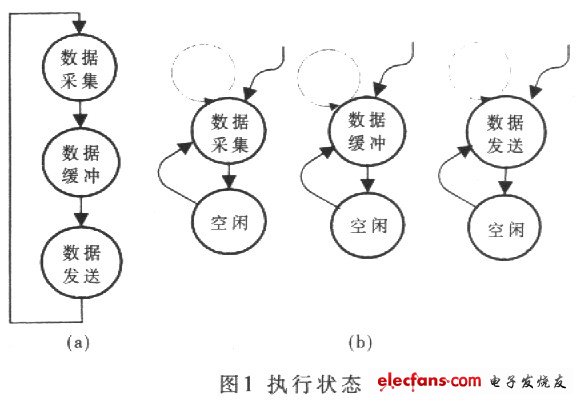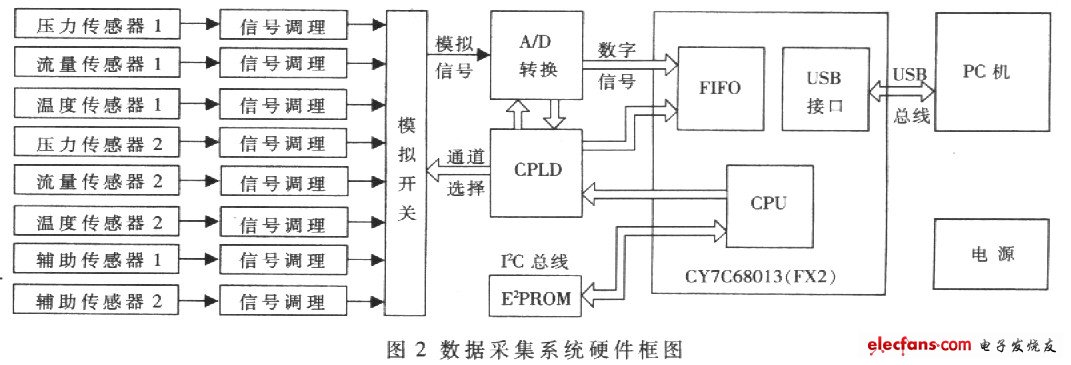The hydraulic system has the advantages of light structure, large transmission ratio, stable operation, easy realization of stepless speed regulation and automation, and has been widely used in various fields of industrial production. However, hydraulic transmission systems (especially large hydraulic systems) also have some disadvantages. Mainly due to its complicated structure and difficult internal state detection, it brings certain difficulties to the condition monitoring and routine maintenance of the hydraulic system. So how to extract the characteristic signals of the system. It is of great engineering significance to effectively monitor the status of the hydraulic system and detect faults and hidden dangers in time.
At present, there are few data acquisition products for hydraulic systems in China, and there are problems such as improper selection or insufficient acquisition parameters, low acquisition rate, failure to accurately reflect the working conditions of the hydraulic system, and interfaces that are not conducive to installation or transmission speed. This paper designs a portable high-speed data acquisition system based on CPLD (complex programmable logic device) + FX2 (single chip CY7C68013), which adopts data stream driven multi-module parallel technology and USB2.0 interface. Practice has proved that the scheme is simple in structure and low in cost, and the real-time synchronous acquisition and transmission speed is equivalent to the DSP series data acquisition products.
1 Design ideas
Data collection includes the conversion of acquisition quantity to electrical parameters, signal conditioning, analog-to-digital conversion, data buffering, data transmission and other parts. Generally, the main control chip directly controls the mode, and the modules such as digital conversion, data buffering, and data transmission are sequentially executed, as shown in FIG. 1(a). To achieve higher acquisition speeds, high-speed master chips such as DSPs must be used, which increases system cost and software and hardware debugging difficulties.

This design uses Cypress's single-chip æŒCY7C68013 (FX2) with intelligent USB interface engine and 4K FTFO, and its USB data transmission part can be executed automatically and independently. Altem's CPLD device EPM7128 was selected and programmed with VefilogHDL language to design analog/digital conversion and data buffer integrated control circuits. The data stream is used to drive the multi-module parallel technology. When the module performs the required data to meet the conditions, the three modules can be executed in parallel, as shown in Figure 1(b), so that the high-speed data can be controlled by the low-frequency CPU. collection.
The PC software is written in National Instruments' IabVIEW language. The G language based on graphical programming greatly improves the development efficiency of the host computer software. In particular, the introduction of its NI-VISA3.0 (Virtual InstrumentaTIon Software Arehitecture) control can be achieved by calling its standardized function-oriented, universal instrument API (ApplicaTIon Programmer Interface) driver interface to drive the self-developed USB device.
2 hardware design
The system hardware configuration is shown in Figure 2. The analog quantity such as pressure, flow, temperature and vibration frequency in the hydraulic system is converted into an electric signal by the sensor, and then processed by a conditioning circuit such as amplification, buffering, filtering, etc., and then selected by the analog switch circuit and then sent to the A/D chip (AD574) for conversion. It is a digital signal and is written into the built-in FIFO of FX2. It is automatically sent to the host computer by the internal integrated uSB controller to complete data acquisition. In addition to controlling the analog switch circuit and the ADC (analog, digital conversion circuit), the CPLD controller also controls to write the acquired data to the FIFO of the FX2. The controller design uses data stream to drive multi-module parallel technology to improve the execution efficiency of the control circuit. The system firmware program is burned in the E2ROM. When power is turned on or reset, the FX2 is automatically loaded. The system is equipped with a DC power supply to meet the needs of outdoor portable collection.

Offshore communication cable
Name:0.6/1kV low smoke halogen free offshore communication cable
Model:S1 RFOU(I), S2 RFOU(C), S3 BFOU(I), S4 BFOU(C)
S1/S5 RFOU(I), S2/S6 RFOU(C), S3/S7 BFOU(I), S4/S8 BFOU(C)
Specification:(1~37 Pairs)×(0.75~2.5)mm2, (1~37 Triples)×(0.75~2.5)mm2
Executive Standards:IEC60092-350, NEK606
Application:The cable is mainly intended for instrumentation, communication, control, and alarm system of offshore units, The codes S1/S5, S2/S6, S3/S7, S4/S8 meets the mud resistant requirements in NEK606.
Flame Retardant Marine Communication Cable
4 Core Cable,Flame Retardant Marine Communication Cable,Offshore Communication Cable Flame Retardant,Halogen Free Flame Retardant Shipboard Cable
Jiangsu Jiangyang Special Cable Co,.Ltd. , https://www.jymarinecable.com
